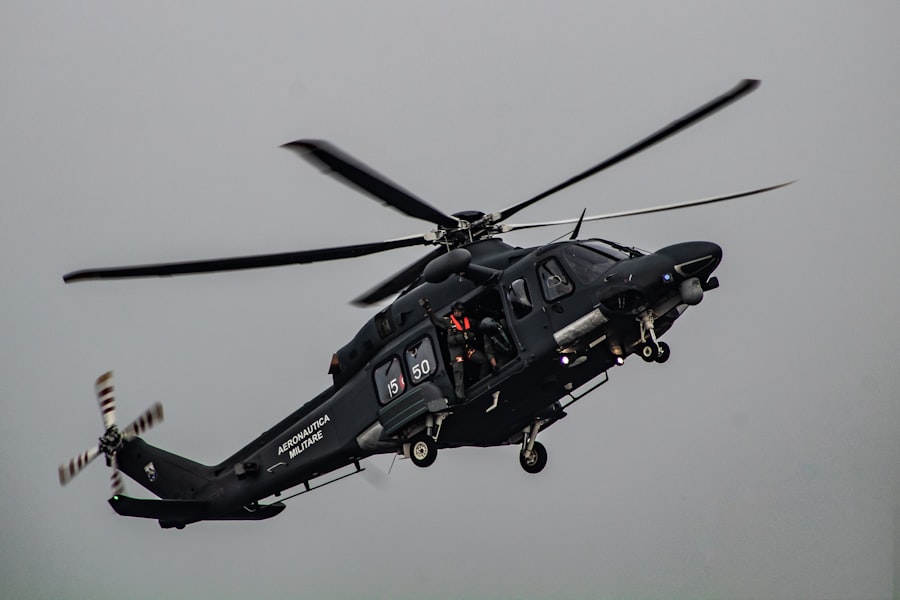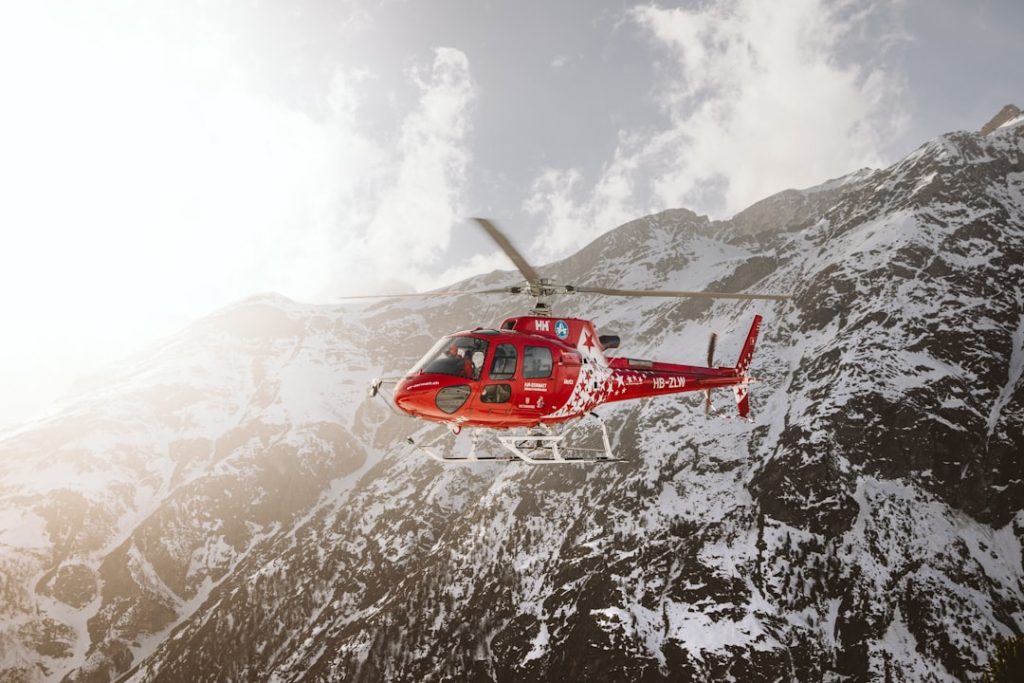The Boeing CH-47 Chinook is a twin-engine, tandem rotor heavy-lift helicopter that has become an iconic symbol of military aviation. Renowned for its distinctive design, the Chinook is capable of transporting troops, supplies, and equipment in a variety of environments, making it an invaluable asset to armed forces around the world. Its unique rotor configuration allows for exceptional lift capabilities and stability, enabling it to operate in challenging conditions where other helicopters might struggle.
The Chinook’s versatility and reliability have solidified its reputation as one of the most effective transport helicopters in history. The Chinook’s design is not only functional but also reflects decades of engineering advancements. With a maximum speed of around 170 knots and a range of approximately 400 nautical miles, it is well-suited for both short-range and long-range missions.
The helicopter’s ability to carry heavy payloads—up to 26,000 pounds—makes it indispensable for logistical operations. As military needs have evolved, so too has the Chinook, adapting to new technologies and operational requirements while maintaining its core capabilities.
Key Takeaways
- The Chinook helicopter is a versatile and widely used aircraft known for its heavy-lift capabilities and ability to operate in various environments.
- The Chinook has a rich history dating back to the 1960s and has undergone several upgrades and developments to enhance its performance and capabilities.
- In the military, the Chinook is used for troop transport, cargo transportation, medical evacuation, and special operations support, making it a crucial asset for military operations.
- In the civilian sector, the Chinook is utilized for firefighting, disaster relief, construction, and transportation of heavy equipment, showcasing its adaptability and usefulness in various industries.
- The Chinook is equipped with advanced features such as a tandem rotor system, a rear loading ramp, and a spacious cabin, making it a highly capable and reliable helicopter for a wide range of missions.
History and Development of the Chinook
The origins of the Chinook can be traced back to the early 1950s when the U.S. Army recognized the need for a heavy-lift helicopter to support its operations during the Cold War. The design was initiated by Boeing Vertol, which was tasked with creating a helicopter that could transport troops and equipment over long distances.
The first prototype, designated the YCH-1B, took to the skies in 1957, showcasing innovative features such as its tandem rotor system and advanced aerodynamics. Following extensive testing and evaluation, the Chinook was officially adopted by the U.S. Army in 1962 as the CH-47The helicopter quickly proved its worth during the Vietnam War, where it was used extensively for troop transport, medical evacuation, and logistical support.
The harsh conditions of the conflict highlighted both the strengths and weaknesses of the Chinook, leading to subsequent upgrades and variants that enhanced its performance and capabilities. Over the years, numerous iterations of the Chinook have been developed, including the CH-47D and the more advanced CH-47F, each incorporating technological advancements that have kept the helicopter relevant in modern warfare.
Military Applications of the Chinook

The military applications of the Chinook helicopter are vast and varied, making it a cornerstone of modern military logistics. One of its primary roles is troop transport; the Chinook can carry up to 55 soldiers or a combination of personnel and equipment, allowing for rapid deployment in combat zones. This capability is particularly crucial during operations where time is of the essence, such as during humanitarian missions or in response to natural disasters.
In addition to troop transport, the Chinook excels in logistical support roles. It can be equipped with external cargo hooks to lift heavy loads such as artillery pieces, vehicles, or supplies directly from ground locations to forward operating bases. This capability is vital in scenarios where traditional supply routes are compromised or non-existent.
The helicopter’s versatility extends to medical evacuation missions as well; its spacious cabin can accommodate stretchers and medical personnel, enabling swift evacuation of wounded soldiers from the battlefield.
Civilian Applications of the Chinook
| Application | Metrics |
|---|---|
| Transportation | Passenger capacity, cargo capacity |
| Disaster Relief | Rescue operations, medical evacuation |
| Firefighting | Water bucket capacity, aerial firefighting |
| Construction | Heavy lifting, construction support |
While primarily known for its military applications, the Chinook helicopter has also found a niche in civilian operations. Its heavy-lift capabilities make it an ideal choice for various industries that require transportation of large or heavy loads. For instance, in firefighting operations, Chinooks are often used to transport water or fire retardant to combat wildfires in remote areas where ground access is limited.
Their ability to hover and drop payloads with precision makes them invaluable assets during such emergencies. Moreover, the Chinook has been employed in construction and infrastructure projects. Its capacity to lift heavy equipment and materials allows for efficient transportation to job sites that may be difficult to access by road.
In addition to construction, the helicopter has been utilized in logging operations, where it can transport logs from remote forested areas to processing facilities. These civilian applications demonstrate the versatility of the Chinook beyond its military roots, showcasing its adaptability to various operational needs.
Technical Specifications and Features of the Chinook
The technical specifications of the Chinook helicopter highlight its engineering prowess and operational capabilities. The CH-47F variant features two Honeywell T55-GA-714A turboshaft engines, each producing approximately 4,733 shaft horsepower. This powerful engine configuration allows the Chinook to achieve a maximum speed of around 170 knots while maintaining excellent performance at high altitudes and in hot weather conditions.
One of the defining features of the Chinook is its tandem rotor system, which consists of two large rotors mounted one behind the other. This design not only provides increased lift but also enhances stability during flight. The rotors are counter-rotating, which helps to cancel out torque effects that would otherwise require a tail rotor for stabilization.
Additionally, the Chinook is equipped with advanced avionics systems that improve navigation and situational awareness for pilots, including digital flight controls and enhanced communication systems.
Notable Chinook Missions and Operations

Throughout its service history, the Chinook has been involved in numerous notable missions that underscore its capabilities and importance in military operations. One such mission occurred during Operation Desert Storm in 1991 when Chinooks played a critical role in transporting troops and supplies into Kuwait as coalition forces launched their offensive against Iraqi forces. The helicopter’s ability to operate in harsh desert conditions allowed for rapid logistical support that was essential for mission success.
Another significant operation involving the Chinook was during Operation Enduring Freedom in Afghanistan. The helicopter was instrumental in various roles, including troop transport and resupply missions in rugged terrain where traditional vehicles could not operate effectively. One particularly notable mission involved a Chinook being used for a daring rescue operation in 2011 when Navy SEALs utilized a CH-47 to extract their team after successfully eliminating Osama bin Laden.
This operation highlighted not only the helicopter’s versatility but also its critical role in modern special operations.
Advantages and Limitations of the Chinook
The advantages of the Chinook helicopter are numerous, making it a preferred choice for many military and civilian applications. Its heavy-lift capacity allows it to transport large payloads efficiently, which is crucial for logistical operations in both combat and humanitarian scenarios. The tandem rotor design provides exceptional stability and lift capabilities, enabling it to operate effectively in diverse environments—from mountainous terrains to urban settings.
However, despite its many strengths, the Chinook does have limitations that must be considered. One significant drawback is its size; while this allows for greater payload capacity, it also makes the helicopter less maneuverable than smaller aircraft. In confined spaces or densely populated areas, this can pose challenges during landing or takeoff.
Additionally, while advancements have been made in avionics and engine performance, older variants may lack some modern technological features found in newer helicopters, potentially impacting operational effectiveness in certain scenarios.
Future of the Chinook Helicopter
Looking ahead, the future of the Chinook helicopter appears promising as Boeing continues to invest in upgrades and modernization efforts. The CH-47F variant has already seen significant enhancements with improved avionics systems and upgraded engines that increase efficiency and performance. Future iterations may incorporate even more advanced technologies such as autonomous flight capabilities or enhanced digital systems that improve situational awareness for pilots.
Moreover, as military operations evolve with changing threats and environments, there will likely be continued demand for heavy-lift helicopters like the Chinook. Its proven track record in various operational contexts ensures that it will remain a vital asset for armed forces worldwide. Additionally, ongoing partnerships with civilian sectors may lead to further innovations that expand its applications beyond traditional roles, ensuring that the Chinook remains relevant well into the future.


